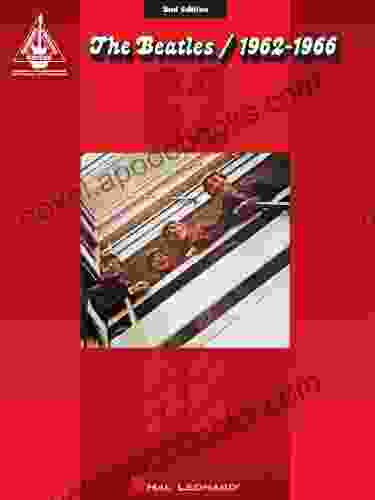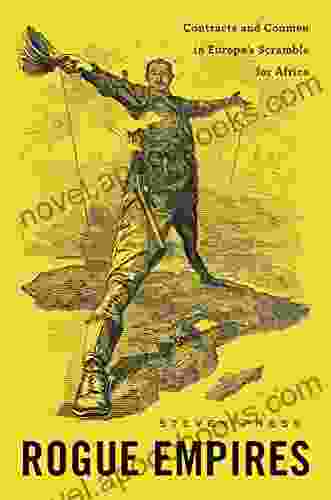Projects in Leather: Historical Article Containing Instructions for Making Keys

5 out of 5
| Language | : | English |
| File size | : | 5341 KB |
| Text-to-Speech | : | Enabled |
| Screen Reader | : | Supported |
| Enhanced typesetting | : | Enabled |
| Print length | : | 115 pages |
Keys have been an integral part of human civilization for centuries, serving as both functional and symbolic objects. From ancient times, people have crafted keys from various materials, including wood, metal, and bone. However, leather, with its inherent durability and versatility, has also been a popular choice for key making.
This article delves into the historical art of making keys from leather, providing detailed instructions and insights into the techniques used by artisans throughout history. We will explore the different types of leather suitable for key making, the necessary tools, and step-by-step guidance for creating functional and visually appealing keys.
Historical Background
The earliest known leather keys date back to ancient Egypt, where they were used to secure valuable items such as jewelry and scrolls. These keys were typically made from thick, tanned leather and featured intricate designs and patterns. Over time, leather keys spread to other parts of the world, including Europe and Asia. In medieval Europe, leather keys were commonly used by both nobility and commoners, often adorned with decorative elements.
In the 18th and 19th centuries, the Industrial Revolution brought about new technologies and materials for key making. However, leather keys continued to be popular, particularly in rural areas and for decorative purposes. Today, leather keys are still used for a variety of applications, from historical reenactments to contemporary jewelry and accessories.
Types of Leather for Key Making
Not all types of leather are suitable for key making. The best leathers for this purpose are those that are durable, flexible, and easy to work with. Here are some recommended options:
- Full-grain vegetable-tanned leather: This is the highest quality leather available, made from the top layer of the hide with all its natural grain and texture. It is extremely durable and will develop a beautiful patina over time.
- Top-grain vegetable-tanned leather: This is similar to full-grain leather but has been sanded to remove some of the imperfections. It is still a high-quality leather but may be slightly less durable.
- Suede leather: Suede is made from the underside of the hide and has a soft, velvety texture. It is not as durable as full-grain leather but can be used to make decorative keys.
Tools for Leather Key Making
To make keys from leather, you will need the following tools:
- Leather
- Leather knife
- Awl
- Hammer
- Rivet setter
- Rivets
- Dye or paint (optional)
Step-by-Step Instructions for Making a Leather Key
Follow these step-by-step instructions to create a functional and visually appealing leather key:
- Cut out the leather: Using a leather knife, cut out a rectangular piece of leather that is approximately 2 inches wide and 4 inches long. This will be the body of your key.
- Create the teeth: Use a leather knife to cut out small, triangular teeth along one edge of the leather. These teeth will grip the lock and allow you to turn the key.
- Punch holes for the rivets: Use an awl to punch two holes near the top of the leather body, about 1 inch apart. These holes will be used to attach the key ring.
- Insert the rivets: Insert a rivet into one of the holes and hammer it into place using a rivet setter. Repeat this process for the second hole.
- Attach the key ring: Open the key ring and attach it to the rivets. Close the key ring to secure it.
- Dye or paint (optional): If desired, you can dye or paint the leather key to give it a custom look. Allow the dye or paint to dry completely before using the key.
Tips for Making Leather Keys
- Use sharp tools to ensure clean cuts and avoid fraying the leather.
- Be patient and take your time. Key making is a craft that requires precision and attention to detail.
- Experiment with different leather types, colors, and designs to create unique and personalized keys.
- If you are unsure about any of the steps, refer to the diagrams and instructions provided.
- Have fun and enjoy the process of creating your own leather keys.
Making keys from leather is a rewarding and enjoyable craft that allows you to create both functional and decorative objects. By following the instructions and tips outlined in this article, you can create beautiful and durable leather keys that will last for years to come.
Whether you are a seasoned leatherworker or a beginner, I encourage you to give leather key making a try. It is a great way to learn new skills, express your creativity, and create unique and personalized accessories.
5 out of 5
| Language | : | English |
| File size | : | 5341 KB |
| Text-to-Speech | : | Enabled |
| Screen Reader | : | Supported |
| Enhanced typesetting | : | Enabled |
| Print length | : | 115 pages |
Do you want to contribute by writing guest posts on this blog?
Please contact us and send us a resume of previous articles that you have written.
 Book
Book Novel
Novel Page
Page Chapter
Chapter Text
Text Story
Story Genre
Genre Reader
Reader Library
Library Paperback
Paperback E-book
E-book Magazine
Magazine Newspaper
Newspaper Paragraph
Paragraph Sentence
Sentence Bookmark
Bookmark Shelf
Shelf Glossary
Glossary Bibliography
Bibliography Foreword
Foreword Preface
Preface Synopsis
Synopsis Annotation
Annotation Footnote
Footnote Manuscript
Manuscript Scroll
Scroll Codex
Codex Tome
Tome Bestseller
Bestseller Classics
Classics Library card
Library card Narrative
Narrative Biography
Biography Autobiography
Autobiography Memoir
Memoir Reference
Reference Encyclopedia
Encyclopedia Raj Balan S
Raj Balan S Oakley Dean Baldwin
Oakley Dean Baldwin Troy Pummill
Troy Pummill Thomas S Spencer
Thomas S Spencer Solomon Igboayaka
Solomon Igboayaka Vicky Kaseorg
Vicky Kaseorg Theodore R Sizer
Theodore R Sizer Tom Franklin
Tom Franklin Quike D B
Quike D B Stacey Roshan
Stacey Roshan Susan Masters
Susan Masters Philip Fracassi
Philip Fracassi Sarah Woodbury
Sarah Woodbury Sheri Overton
Sheri Overton Ray Kingfisher
Ray Kingfisher Peter Swan
Peter Swan Nicolas Modrzyk
Nicolas Modrzyk Nicole Riddley
Nicole Riddley Zhijian Tao
Zhijian Tao Margaux Deroux
Margaux Deroux
Light bulbAdvertise smarter! Our strategic ad space ensures maximum exposure. Reserve your spot today!

 George MartinThe Final Unfinished Voyage of Jack Aubrey: A Literary Masterpiece Sets Sail
George MartinThe Final Unfinished Voyage of Jack Aubrey: A Literary Masterpiece Sets Sail
 Gabriel HayesUnleash Your Creativity with Crochet Pattern Whale Applique: A Masterpiece...
Gabriel HayesUnleash Your Creativity with Crochet Pattern Whale Applique: A Masterpiece...
 Jonathan FranzenA Timeless Collection: Christmas Carols, Classical Music, Nursery Rhymes, and...
Jonathan FranzenA Timeless Collection: Christmas Carols, Classical Music, Nursery Rhymes, and...
 Bruce SnyderImmerse Yourself in the Enchanting Shores of Sardinia: Your Ultimate Travel...
Bruce SnyderImmerse Yourself in the Enchanting Shores of Sardinia: Your Ultimate Travel...
 Peter CarterThe Beatles 1962-1966 Songbook Guitar Recorded Versions: A Definitive Guide...
Peter CarterThe Beatles 1962-1966 Songbook Guitar Recorded Versions: A Definitive Guide... Allen GinsbergFollow ·12.1k
Allen GinsbergFollow ·12.1k Denzel HayesFollow ·7.7k
Denzel HayesFollow ·7.7k Brennan BlairFollow ·8.6k
Brennan BlairFollow ·8.6k Chase SimmonsFollow ·5k
Chase SimmonsFollow ·5k F. Scott FitzgeraldFollow ·18.3k
F. Scott FitzgeraldFollow ·18.3k Mario SimmonsFollow ·16.5k
Mario SimmonsFollow ·16.5k Forrest ReedFollow ·18k
Forrest ReedFollow ·18k Emanuel BellFollow ·6.5k
Emanuel BellFollow ·6.5k

 Shaun Nelson
Shaun NelsonUnlocking the Intricate Nexus: The Globalization and the...
In an era marked by...

 Robin Powell
Robin PowellLast Summer at the Golden Hotel: A Captivating Journey of...
Synopsis: A Transformative Summer at...

 Gabriel Mistral
Gabriel MistralContracts And Conmen In Europe Scramble For Africa
The late 19th and early...

 Glenn Hayes
Glenn HayesThe Story of the United States' Longest Wildcat Strike: A...
Prologue: The...

 Evan Hayes
Evan HayesBritain Empire Resistance Repression And Revolt:...
: The Tapestry of...

 Eddie Bell
Eddie BellGreen's Operative Hand Surgery: The Ultimate Guide for...
Green's Operative Hand Surgery is the...
5 out of 5
| Language | : | English |
| File size | : | 5341 KB |
| Text-to-Speech | : | Enabled |
| Screen Reader | : | Supported |
| Enhanced typesetting | : | Enabled |
| Print length | : | 115 pages |


